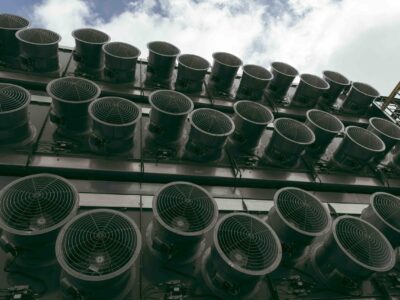When the U.S. went into COVID-19 lockdown back in March, much of the country was still in the final stretch of winter. And by the time some of the restrictions were lifted, many regions were battling record heat waves. Americans working from home had to crank up the heat during the cold months and then blast the A/C during the sweltering summer season, leading to much higher utility bills — yet another major unforeseen side-effect of the pandemic. In response, businesses and government bodies have worked to help offset home power bills through relief efforts and innovative renewable energy programs.
One of those programs is offered by Arcadia, a Washington, D.C.-based technology company. Arcadia’s platform lets residents in all 50 states connect to renewable energy sources, regardless of whether they own a home or rent an apartment. They can either tap into community solar power sources or get renewable energy certificates.
Under this program, employers partner with Arcadia to buy clean energy for their work-from-home employees. Employers that take part can purchase renewable energy credits to offset a worker’s emissions or subsidize their employees’ energy bills. Employees get access to their own Arcadia accounts, which provide bill information and data that tracks the program’s impact on energy use. Companies that have partnered with Arcadia so far include McDonald’s, SkySpecs, and CustomerFirst. Those taking part can access sustainability reports on their workers’ energy use and then report any lowered carbon emissions under the Greenhouse Gas Protocol.
The program was initially a response to the millions of U.S. employees who were forced to work from home when the coronavirus lockdown was put in place – and then watched their power bills increase. Fast Company recently noted that of the top 13 metro areas in the U.S., Arcadia has seen energy use rise anywhere from 2% in Seattle to 15% in New York over the past year.
In March, Austin Energy, a Texas-based public utility, sent about 33,000 Austin residents emails warning them that they’d used “significantly more electricity” than normal in recent days. The California Public Utilities Commission has reported a 15% to 20% rise in the state’s residential electricity use with more people working from home.
To address the increase in consumers’ utility bills, government agencies and energy companies have partnered to provide support to consumers who are struggling with their payments. These efforts include debt repayment plans for utility bills, payment discounts, more time to pay bills, and access to hardship funds.
The lockdown could represent a big turning point in the nation’s work life. Even when work-from-home restrictions are lifted, many employees will want to continue working from home, according to a May survey conducted by CreditCards.com. The survey found that more than one-third of Americans who switched to remote work said they wanted to keep working remotely when things are back to normal.
“With this permanent shift, companies are going to start thinking more about sustainability, work-life balance, and helping people who are working from home manage their home environments,” said Arcadia CEO Kiran Bhatraju.
One of the keys to efficient energy use at home is ensuring that computers are shut down when not in use. A study conducted by the Natural Resources Defense Council (NRDC) found that electronics in sleep mode account for 23 percent of home energy use. The simple way to avoid that cost is to turn off your computer when the workday is done.
Arcadia offers other tips on how to lower your power bill while working from home. To save on your light bill, set up your work station where there’s plenty of natural light. An added bonus: natural light puts you in a better frame of mind and increases productivity. You might also consider switching to a fixed-price monthly energy cost to make your bills more predictable.
Finally, energy-efficient equipment such as ENERGY STAR-certified office equipment lets you use about half of the energy of standard office equipment. Energy savings could run as high as 75 percent. Using laptops instead of desktop computers is another energy saver.





